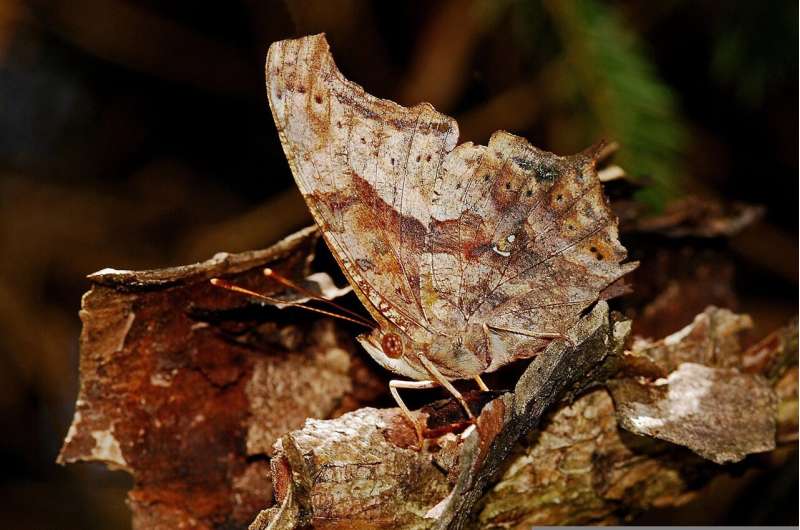September 14, 2022 report
Comparing effectiveness of camouflage in different animals

A quartet of researchers from Universidade Estadual de Campinas, Básicas, Universidade de São Paulo, and São Bernardo do Campo, all in Brazil, has conducted a study of the effectiveness of different types of camouflage strategies in animals. In their paper published in Proceedings of the Royal Society B: Biological Sciences, João Vitor de Alcantara Viana, Camila Vieira, Rafael Campos Duarte and Gustavo Quevedo Romero describe their study and which strategy they found to be the most effective.
A lot of work has been done studying the camouflage strategies of different animals, from color changing chameleons, to caterpillars that look like leaves or twigs. But, as the researchers with this new effort found, very little, if any work has been done to compare the different strategies between different creatures. Surprised by that finding, they carried out a study of their own.
The study by the researchers involved searching for published papers regarding camouflage in any creature for the period 1900 to 2022 and then comparing what they found. As their work progressed, they narrowed down their focus to just 84 studies—each had involved conducting experiments to rate how well a given camouflage strategy worked and also how long it took a predator to find the camouflaged prey. Also, some of the studies included data on how often certain camouflaged animals were attacked.
The researchers then split up the studies by category—creatures who used "background matching" as a strategy and creatures who used masquerading as a strategy. The latter meant those species that look like a non-prey type object, such as a leaf.
In looking at their data, the researchers found that those animals that used masquerading (as compared to background matching) were less likely to be seen by a predator, much less chased or eaten. This was most evident in those that were very good mimics, such as caterpillars that very closely matched the trees they lived on. The researchers also found that camouflage was an effective survival strategy in general—search times for them were 62% longer than for similar non-camouflaged creatures.
The researchers suggest that the reason more creatures do not use masquerading as a camouflage strategy is that it generally requires the creature to be roughly the same size as the object it is trying to match. They also noticed that most studies involved in the study of camouflage were conducted in the Northern Hemisphere. They suggest much more work needs to be done to learn about the true effectiveness of the different types of camouflage used by animals across the globe. They also note that similar work regarding predators using camouflage to help them capture prey are understudied.
More information: João Vitor de Alcantara Viana et al, Predator responses to prey camouflage strategies: a meta-analysis, Proceedings of the Royal Society B: Biological Sciences (2022). DOI: 10.1098/rspb.2022.0980
Journal information: Proceedings of the Royal Society B
© 2022 Science X Network





















